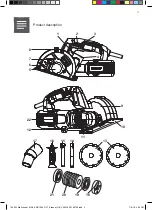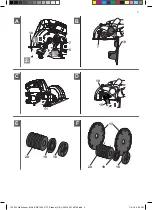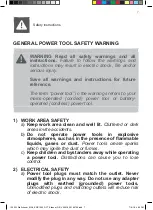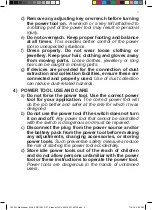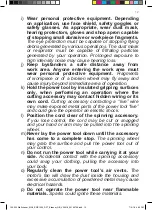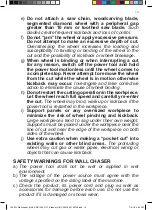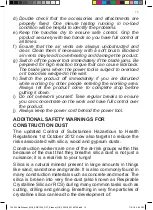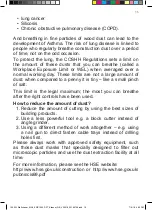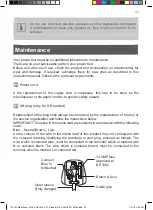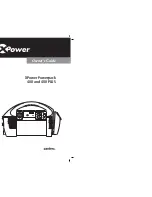
15
d)
Double check that the accessories and attachments are
properly fixed. One minute testing running in no-load
condition will be helpful to identify the problems.
e)
Keep the handles dry to ensure safe control. Grip the
product securely with two hands so you have full control at
all times.
f)
Ensure that the air vents are always unobstructed and
clear. Clean them if necessary with a soft brush. Blocked
air vents may lead to overheating and damage the product.
g)
Switch off the power tool immediately if the blade jams. Be
prepared for high reaction torque that can cause kickback.
The blade jams when: the power tool is subject to overload
or it becomes wedged in the wall.
h)
Switch the product off immediately if you are disturbed
while working by other people entering the working area.
Always let the product come to complete stop before
putting it down.
i)
Do not overwork yourself. Take regular breaks to ensure
you can concentrate on the work and have full control over
the product.
j)
Always keep the power cord behind the power tool.
ADDITIONAL SAFETY WARNINGS FOR
CONSTRUCTION DUST
The updated Control of Substances Hazardous to Health
Regulations 1st October 2012 now also targets to reduce the
risks associated with silica, wood and gypsum dusts.
Construction workers are one of the at-risk groups within this
because of the dust that they breathe: silica dust is not just a
nuisance; it is a real risk to your lungs!
Silica is a natural mineral present in large amounts in things
like sand, sandstone and granite. It is also commonly found in
many construction materials such as concrete and mortar. The
silica is broken into very fine dust (also known as Respirable
Crystalline Silica or RCS) during many common tasks such as
cutting, drilling and grinding. Breathing in very fine particles of
crystalline silica can lead to the development of:
1500 W Wall chaser_MNL_EWC1500_DFT_Erbauer_GB_V20518_20180706.indd 15
7/6/18 4:05 PM
Summary of Contents for 3663602795292
Page 35: ......




